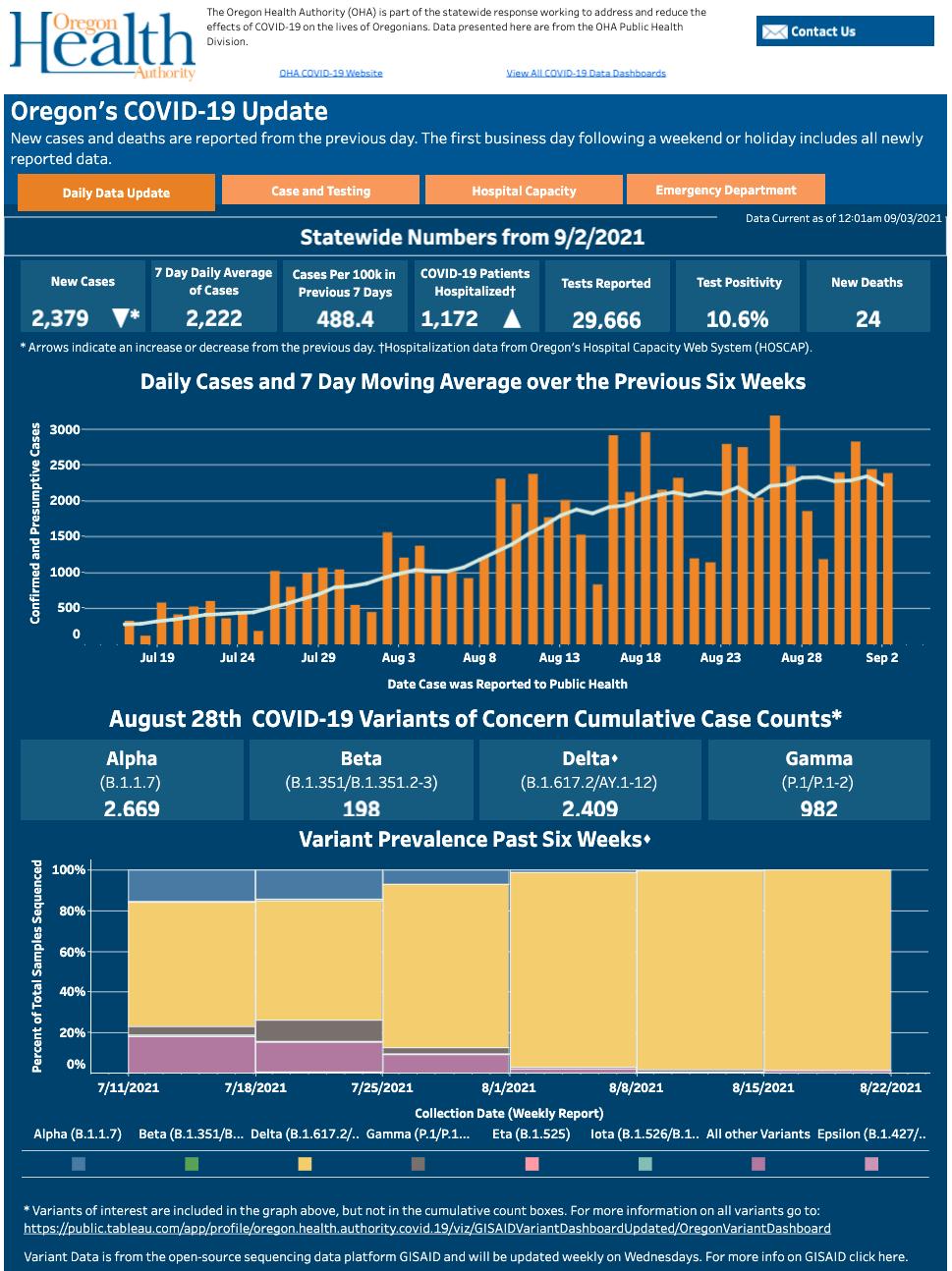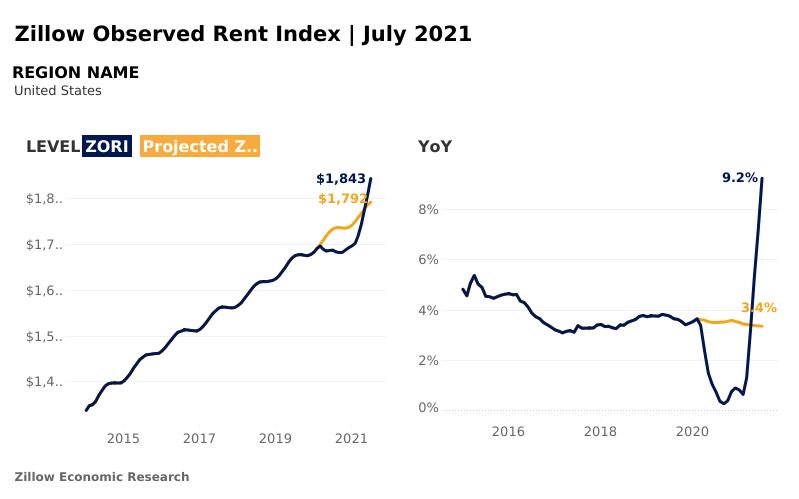
6 minute read
OREGON COVID-19 UPDATE
By Press Release
Southwest Airlines Landing at EUG
Advertisement
The EUG Airport Rescue and Fire Fighting (AARF) team provided a spectacular Tri Color Welcome Salute to Southwest Airlines on Sunday, August 29, 2021.

Inaugural festivities commenced on Sunday, August 29th, to welcome Southwest Airlines to the Southern
Willamette Valley, including a ceremonial water salute and gifts for passengers on the first scheduled Southwest flights at the
Eugene Airport.
“We’re thrilled to become part of the
Southwest Airlines family,” said Cathryn
Stephens, A.A.E., Acting Airport Director at the Eugene Airport. “We look forward whole-heartedly to the “Southwest Effect” taking hold in our area, benefiting our local passengers and broader regional community.” The “Southwest Effect” is a phenomenon in which markets that
Southwest Airlines enters enjoy a decrease in average airfares and an increase in passengers. With 41% of local passengers currently driving out of the area to utilize other airports, the addition of Southwest Airlines is anticipated to improve passenger retention at the Eugene Airport. Studies have shown flying local, by reducing highway trips to an airport further away, is a more environmentally sustainable choice. “Southwest Airlines’ arrival in Eugene brings our low-fare service, unique value, and worldfamous Hospitality to Track Town USA, and gives local travelers who live across Central Oregon faster access to what we offer,” said Adam Decaire, Vice President of Network Planning for Southwest Airlines. “With nonstop service between the Emerald City and both Las Vegas and Oakland, the depth of our schedule puts Southern California, Arizona, Hawaii, and more than 60 cities within faster reach.” Southwest Airlines will start service at EUG with daily flights to Las Vegas and twice-daily flights to Oakland, with hopes that nonstop routes will expand to include additional destinations in the future. Multiple community partners were involved in the Southwest Airlines recruitment earlier this year including the Eugene Area Chamber of Commerce, Springfield Area Chamber of Commerce, Travel Lane County, Onward Eugene, Mead & Hunt, City of Eugene, City of Springfield, Lane County Government, University of Oregon, Oregon State University, Technology Association of Oregon, Business Oregon, and the Governor’s Regional Solutions Office. More than 50 private businesses and elected officials wrote letters of support, pledging to Fly Local, Fly EUG!
By Brad from Stessa www.stessa.com
Rents Becoming More Unaffordable
Supreme Court eviction ruling
In a 6-3 decision last week, the Supreme Court ruled that the U.S. Centers for Disease Control and Prevention (CDC) didn’t have the authority to impose an eviction moratorium. According to Greg Stohr of Bloomberg, President Biden acknowledged the moratorium, which originated under the previous administration, was on shaky legal ground, however noted it was necessary to protect those facing financial hardship across the country. According to Stohr, real estate and landlords groups disagreed, believing instead that the moratorium was harming small investors who still had to pay their bills.
In their decision, the Supreme Court noted:
“The moratorium has put the applicants, along with millions of landlords across the country, at risk of irreparable harm by depriving them of rent payments with no guarantee of eventual recovery. Despite the CDC’s determination that landlords should bear a significant financial cost of the pandemic, many landlords have modest means. And preventing them from evicting tenants who breach their leases intrudes on one of the most fundamental elements of property ownership—the right to exclude.” Despite being unconstitutional, Housing Wire reports on sources who noted the moratorium was effective, and that President Biden may call on federal agencies to enact their own eviction bans. The President also asked for Congress to pass legislation for a new national ban.
The National Association of Realtors (NAR) issued a statement on the decision:

“No housing provider wants to evict a tenant—it is always a last resort and reserved for the rarest cases. The best solution for all parties is rental assistance, and all energy should go toward its swift distribution. Nearly $50 billion of aid is now available to cover up to a year-and-a-half of combined back and future rent and utilities for struggling tenants—and every state has started a program to distribute the funds.”
Similarly, the National Multifamily Housing Council (NMHC) commented that:
“We remain focused on efforts to stabilize renters and housing providers through rental assistance. Despite the provision of almost $50 billion in federal rental assistance, a top NMHC priority, some jurisdictions have failed to effectively design and administer their assistance programs, resulting in an unacceptable delay in the distribution of benefits.”
But, distributing aid has proven difficult. The eviction ban was part of a 2-phase approach by the federal government to help renters. The second part was $46 billion in rental assistance. For the latter, however, the Associated Press reported last week that states and localities have only distributed 11% of the funds, according to the Treasury Department.
What are rents up to?
Two new reports from Zillow shed some light on recent rental data. According to Nicole Bachaud of Zillow, renters are forecasted to continually be costburdened in the coming years. Generally speaking, renters should be below the 30% of rent-to-income threshold to be considered not “housing-cost burdened.”
“By the end of the year, assuming current rent and income growth trends largely hold, Zillow expects that share to rise to 30.2% — above the 30% threshold at which a resident is defined as “housing-cost burdened,” at risk of not having enough income left over each month to adequately afford other life costs beyond housing. That 30% threshold is not just an arbitrary

Source: Nicole Bachaud. "The Typical U.S. Renter is Expected to be 'Housing Cost Burdened' By the End of 2021," Zillow, Aug. 12, 2021.
number, either — previous Zillow research found that once a community’s median rent affordability figure exceeded 32%, local rates of homelessness and housing insecurity should also be expected to begin rising precipitously.”
In a second report, Zillow found that the fast-appreciating rents increased above what the pre-pandemic trends suggested. This can be considered an effect of the strong rental market recovery, but also places more spotlight on affordable housing.
“Rents first surpassed their pre-pandemic trajectory in June, recovering from a difference of -3% (-$55) at its lowest point last September. The stalled rental market from last spring through this past winter stood in sharp contrast to the still-strong for-sale market, but recent months of intense rental demand has caused rent growth to accelerate.” Nicole Bachaud and Alexandra Lee. "Rent Prices Soar Beyond Pre-Pandemic Projections (July 2021 Market Report)," Zillow, Aug. 19, 2021.
In commenting on recent Realtor.com data, Paul Bergeron of Globe St reports that buying a starter home costs less per month than renting a similar-sized unit in almost half of the largest U.S. metropolitan areas.
And, it’s not just residential rents that are rising. According to reports, industrial rents are increasing at record levels, and so too are self-storage rents.

Source: Nicole Bachaud and Alexandra Lee. "Rent Prices Soar Beyond Pre-Pandemic Projections (July 2021 Market Report)," Zillow, Aug. 19, 2021.










